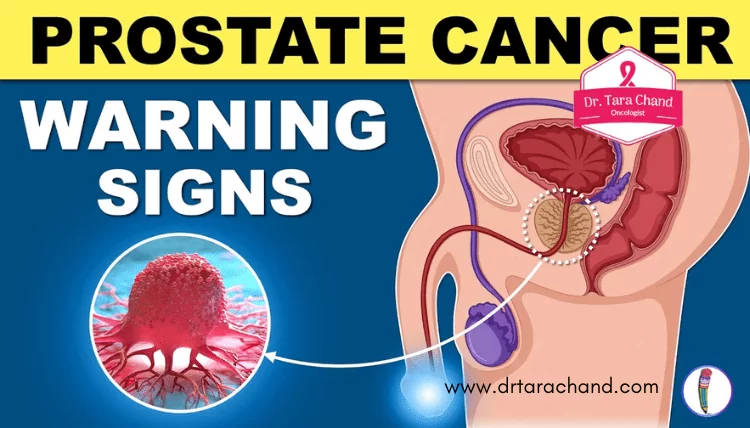Mysterious Human Metapneumovirus—Is It the Next COVID-19?

In 2023, China saw a big rise in Human Metapneumovirus (HMPV) cases. Almost 70% of these cases were in kids under 14 in the north. This is a big worry for respiratory virus outbreaks.
HMPV was first found in 2001. Now, health experts are watching it closely. They want to find out why some people get very sick from it, like bronchitis and pneumonia.
The Chinese government is starting a new system to catch outbreaks early. They learned a lot from the COVID-19 pandemic. They say it’s key to keep clean, see a doctor if you’re sick for a long time, and stay updated on health news.
With these steps, it’s more important than ever to learn about HMPV. We need to know how it spreads and what symptoms to look out for.
Table of Contents
Understanding Human Metapneumovirus
Human metapneumovirus (hMPV) is a major respiratory pathogen often missed in clinics. It affects vulnerable groups, sparking questions about awareness, diagnosis, and treatment. Knowing about this virus is crucial for public health, given its potential to cause severe illness.
What is Human Metapneumovirus?
So, what is human metapneumovirus? It’s a respiratory virus in the Pneumoviridae family. It can cause illnesses like the common cold and flu. HMPV is common in older adults and those with chronic conditions.
It’s responsible for about 123,000 hospitalizations in older patients in the U.S. each year. Its impact on respiratory diseases makes it as concerning as RSV.
Discovery and History of HMPV
The history of HMPV began in the 1950s but got attention in 2001. A cluster of unexplained respiratory infections in Dutch children was the reason. This led to research on its severe respiratory disease potential.
Studies show about 11% of adult hospitalizations for respiratory illness are due to HMPV. This history shows the ongoing challenge of this virus in respiratory diseases.
Symptoms and Impact of HMPV
Human metapneumovirus symptoms can vary a lot, mainly affecting the lungs. Knowing these symptoms is key for the right treatment.
Common Symptoms of HMPV Infection
People with HMPV may show different symptoms. These usually start three to six days after getting infected. Common symptoms include:
- Cough
- Fever
- Nasal congestion
- Sore throat
- Wheezing
- Difficulty breathing
These symptoms can be mild or more serious in some people. This is why it’s important for those who care for others to be aware.
Severity and Complications
HMPV can cause mild to serious lung problems. In young kids and the elderly, it can lead to serious issues. This is why knowing the risks is crucial.
- Bronchiolitis
- Pneumonia
Many kids in the hospital face serious problems. So, it’s important to understand how serious HMPV can be to act fast.
Transmission of Human Metapneumovirus
Learning how HMPV spreads is key to staying safe. Human metapneumovirus is contagious, mainly spread through coughs and sneezes. It can also spread by touching surfaces and then touching your face. Knowing who’s at risk helps stop it from spreading.
How HMPV Spreads
People often ask, how do you get human metapneumovirus? It spreads mainly in close settings, like families. A study showed that many family members got HMPV, pointing to family spread. The sick person was usually young, around 5 years old, while others were from 2 months to 46 years old.
The time from when symptoms start in one person to others is about 5 days. This shows how quickly it can spread.
Risk Factors for Infection
Some groups face a higher risk of getting HMPV. Young kids and the elderly are more likely to get very sick. Kids under two, especially those with health problems, often end up in the hospital.
People with asthma, COPD, or weak immune systems are also at a higher risk. While most cases are mild, 5-16% of kids can get pneumonia.
| Age Group | Risk Level | Common Symptoms |
|---|---|---|
| Infants (0-1 year) | High | Fever, Cough |
| Children (2-5 years) | Moderate | Cold-like symptoms |
| Older adults (65+ years) | High | Severe respiratory issues |
| Individuals with compromised immune systems | High | Pneumonia |
Diagnosing HMPV
Diagnosing human metapneumovirus needs a mix of clinical checks and lab tests. Doctors use symptoms and special tests to spot this infection well.
Common Diagnostic Methods
The common diagnostic methods for HMPV include advanced lab tests. Tests like PCR and RT-PCR find HMPV RNA in samples. The U.S. Health and Human Services says these tests, with doctor’s observations, boost accuracy.
Other methods like bead-based arrays and microarrays help find many viruses at once. This gives doctors a full picture of what’s going on with a patient. It helps them tell HMPV apart from other viruses with similar symptoms.
Challenges in HMPV Detection
Even with better diagnosing human metapneumovirus, finding HMPV can still be hard. Symptoms of HMPV can look like other common colds or flu. This might lead to wrong diagnoses and delayed treatment.
Also, tests that show HMPV don’t mean there aren’t other infections too. This makes diagnosis tricky. Doctors need to keep improving how they test for HMPV to help patients better.
| Diagnostic Method | Description |
|---|---|
| Polymerase Chain Reaction (PCR) | A technique to amplify and detect viral RNA from respiratory samples. |
| Reverse-Transcriptase PCR (RT-PCR) | Used for converting RNA into DNA, allowing for the detection of HMPV. |
| Bead-based Liquid Arrays | A multiplex assay method that detects multiple viruses simultaneously. |
| Microarrays | A technique that screens for various viral nucleic acids from samples. |
Treatment Options for HMPV
Treatment for human metapneumovirus (HMPV) mainly focuses on supportive care. There is no specific antiviral treatment yet. This is important because HMPV can be serious, especially for the elderly or those with weak immune systems.
Supportive Care and Management
Supportive care for HMPV aims to ease symptoms and keep patients comfortable. This includes:
- Hydration: It’s key to keep patients hydrated, especially if they’re having trouble breathing.
- Fever Control: Using antipyretics can help lower fever and make patients feel better.
- Oxygen Therapy: For severe cases, especially in older adults or those with breathing problems, oxygen supplements may be needed to improve oxygen levels.
It’s important to keep an eye on how well patients are breathing, especially if they’re at high risk. Treatment plans should change based on how severe symptoms are and how well patients are doing.
Antiviral Treatments Available
There aren’t many antiviral treatments for HMPV yet. Some studies have looked at using ribavirin, with mixed results. In one study, two out of nine patients with weak immune systems got better with ribavirin and IVIG. But, this isn’t a common treatment and needs more research.
Doctors advise caution with untested antiviral drugs. They say to stick with proven supportive care. They suggest that treatment for human metapneumovirus should be based on the patient’s specific needs and the doctor’s best judgment.
| Supportive Care Strategies | Purpose |
|---|---|
| Hydration | Maintaining fluid balance and preventing dehydration |
| Fever Control | Relieving discomfort caused by fever |
| Oxygen Therapy | Improving oxygen saturation in severely affected patients |
Preventing Human Metapneumovirus Infections
The human metapneumovirus (HMPV) is a serious threat for severe respiratory infections. It’s crucial to know how to prevent it. Since no vaccine is available yet, following prevention strategies is key to fight infections.
Vaccine Development Status
Creating a vaccine for HMPV is still in the early stages. Scientists are working hard to find a vaccine. But, none are ready for public use yet. They are studying the virus to make a vaccine that protects us for a long time.
Effective Preventative Measures
Stopping HMPV infections requires several important steps. These steps help reduce how it spreads. It’s especially important for kids and older adults to take these precautions seriously. Here are some effective ways to prevent HMPV:
- Frequent hand washing with soap and water.
- Using alcohol-based hand sanitizers when soap is unavailable.
- Wearing masks in crowded or enclosed spaces.
- Avoiding close contact with individuals showing respiratory symptoms.
- Covering mouth and nose when coughing or sneezing.
- Practicing good respiratory hygiene in communal areas.
Health campaigns are vital in teaching people how to prevent HMPV. By spreading the word, we can lower the risk of outbreaks. This is especially important during times when HMPV infections are more common.
| Preventative Measure | Description | Effectiveness |
|---|---|---|
| Hand Hygiene | Washing hands regularly reduces spread. | High |
| Mask Wearing | Masks in close quarters lower transmission rates. | Moderate |
| Social Distancing | Avoiding close contact limits exposure. | High |
| Respiratory Etiquette | Coughing or sneezing into tissue/mask protects others. | High |
HMPV vs. Other Respiratory Viruses
Human metapneumovirus (HMPV) can be confusing because it looks like influenza and RSV. It’s important to tell them apart, especially since they affect people differently. Knowing how HMPV works with other viruses helps us understand healthcare challenges.
Comparison with Influenza and RSV
HMPV and influenza both show up in winter and spring, causing coughs, fevers, and stuffy noses. But, HMPV is less common, affecting about 9% of adults. Influenza, on the other hand, hits 22% of people.
RSV and HMPV share symptoms but affect different groups. HMPV mainly hits young kids and older adults. This makes it crucial to focus on these groups during peak times.
Understanding Co-infections with HMPV
When HMPV is mixed with other viruses, it can make things harder, especially for those with weak immune systems. Studies show many HMPV patients also had other respiratory issues. For example, 9 patients got serious lung infections, with some sadly dying.
This mix-up makes it tough for doctors. They need to test for HMPV more during busy times. It’s key to include HMPV in tests for respiratory problems.
Public Health Implications of HMPV
The Human Metapneumovirus (HMPV) has become a major respiratory virus. It has big public health implications of HMPV. Health officials must watch HMPV outbreaks closely. This is because hospitals are dealing with many viruses at once.
Monitoring and Surveillance Programs
Tracking HMPV spread is key. Programs find HMPV in 2.2% of people not sick with flu or HRSV. This helps health teams act fast. They learn how to fight HMPV better.
- Regular testing across various age groups to detect HMPV early.
- Analysis of swab samples collected during influenzalike illness investigations.
- Assessing the clinical presentations among confirmed HMPV cases, especially noting that 67% showed lower respiratory tract involvement.
Impact on Healthcare Systems
The healthcare system impact of HMPV is huge. It hits hardest in late winter and early spring, when other colds are around. About 44% of those with HMPV were on antibiotics. This shows how hard it is for doctors to tell viruses apart. Keeping an eye on HMPV helps hospitals get ready for more cases.
| Statistic | Value |
|---|---|
| Patients negative for influenza and HRSV | 57.3% |
| Detection rate of HMPV | 2.2% |
| Patients with lower respiratory tract involvement | 67% |
| Patients receiving antibiotic therapy | 44% |
| Common infection period for HMPV | Late winter and early spring |
Research and Future Directions
The study of human metapneumovirus (HMPV) is growing as it’s seen as a key player in respiratory diseases. Researchers are looking into how it works, how it spreads, and how to stop it. Knowing more about HMPV is key to fighting it in public health.
Current Studies on HMPV
Recent studies show a lot of interest in HMPV, with the U.S. leading in research. In 2008, there was a big surge in HMPV studies, with 70 articles published. This caught a lot of attention for its health implications.
These studies have been cited over 26,700 times, showing they’re important. The Hirsch index of 80 highlights the impact of this research.
Areas Needing Further Investigation
Even with progress, there’s still a lot to learn about HMPV. It’s especially important to understand its effects on young and old people. Researchers need to study the different strains and their changes.
Creating vaccines and treatments is urgent, as respiratory infections are a big problem worldwide. This is why finding ways to fight HMPV is so critical.
Working together globally is key, as scientists from 69 countries and many organizations are involved. Places like Vanderbilt University and Laval University are leading the way in this research.
The Role of Immunity in HMPV
Understanding how our bodies fight HMPV is key to preventing future infections. Studies show that people react differently to HMPV. Some may fight it off well, while others may not.
When we first get HMPV, our immune system tries to fight it. But how well it does can vary a lot. This means some people might get sick again more easily.
Immune Responses to HMPV
HMPV infections trigger a weak immune response. This is because our body’s first line of defense doesn’t work as well as it should. The immune system then tries to fight back, but it’s not strong enough.
People who have had HMPV before often have lower antibodies. Antibodies are like soldiers that fight off viruses. Having fewer antibodies means our body is less ready to defend itself against HMPV again.
Long-term Immunity and Reinfection
Long-term immunity to HMPV is a big concern. It’s especially true for people with low antibody levels. A study found that 71% of those with low antibodies got sick again, compared to 36% with higher levels.
This shows how important it is to keep an eye on our immune system over time. Even kids can develop antibodies by age five. But, without strong immunity, they can still get sick again.
HMPV in Vulnerable Populations
Human metapneumovirus affects vulnerable groups a lot, especially babies, young kids, and the elderly. It’s important to know how it impacts them. This knowledge helps in making public health plans to reduce HMPV risks.
Impact on Infants and Young Children
Babies and young kids with human metapneumovirus face serious respiratory issues. This makes them very likely to get very sick. Studies show it’s a big problem, second only to RSV in kids.
Infants under one year get infected the most, with rates between 4% and 15%. By age five, almost all kids have caught HMPV. This shows how common it is in young people.
Complications for the Elderly
The elderly face big challenges with HMPV. Older adults often get very sick, leading to pneumonia and needing hospital care. Their immune systems are weaker, making them more vulnerable to viruses.
Studies show HMPV can cause serious problems in the elderly, especially those with chronic diseases. The virus is most active in winter and early spring, making things harder.
| Population Group | Key Statistics | Complications |
|---|---|---|
| Infants & Young Children | 4%–15% infection rate among children under one year | Severe respiratory conditions, hospitalization |
| Elderly | Significant incidence in patients with pre-existing health conditions | Pneumonia, increased hospitalization risk, vulnerability to severe outcomes |
Global Perspective on HMPV
Understanding HMPV’s global impact is key to public health. Its spread varies widely, influenced by where people live and who they are. Studies show HMPV causes 4-16% of respiratory infections, showing it affects many.
Prevalence of HMPV Worldwide
HMPV’s spread varies greatly around the world. It’s found in high numbers in the U.S., Canada, and parts of Europe and Asia. For example, a study in Guangzhou found HMPV in about 5.2% of people with respiratory infections.
Geographical Variations in Incidence
Where HMPV is found changes from place to place. Group A strains make up 69% of cases, while Group B makes up 31.2%. Younger people tend to have Group B more often.
Research shows certain strains are more common in some areas. For example, a big increase in cases was seen in Guangzhou in 2017.
Myths and Facts About HMPV
Human metapneumovirus (HMPV) is complex, filled with myths and misconceptions. Many people believe misbeliefs about how serious HMPV is. This section aims to clear up these myths and provide the truth.
Common Misconceptions
Many myths about human metapneumovirus confuse people. Some common misconceptions include:
- HMPV only affects children with asthma.
- There is a cure available for HMPV.
- HMPV is a serious threat solely during pandemic periods.
- HMPV cannot lead to severe respiratory conditions.
Evidence-based Clarifications
Here are the facts that debunk these myths:
| Myth | Fact |
|---|---|
| HMPV only affects children with asthma. | HMPV is common among young children, older adults, and those with weakened immune systems. |
| There is a cure available for HMPV. | Currently, treatment focuses on supportive care; no specific cure exists. |
| HMPV is a serious threat solely during pandemic periods. | Infections happen year-round, with spikes noted during winter months. |
| HMPV cannot lead to severe respiratory conditions. | Clinical symptoms can range from mild illness to severe conditions like pneumonia. |
These facts and misconceptions about HMPV show why accurate information is crucial. It helps us understand and prepare for infections. It also highlights the need for more research to fight this virus.
Media Coverage and Public Awareness
The way human metapneumovirus (HMPV) is shown in the media is key. It shapes how people see and understand the virus. Good media coverage helps start important talks about its effects on health. It’s crucial to share correct and easy-to-get info, especially when colds and flu are common.
How HMPV is Portrayed in the Media
News outlets have talked about more HMPV cases, especially in places like China. This shows we need to stay alert and know about the virus. Reports often point out symptoms like cough, fever, and trouble breathing.
By sharing these details, reporters help people know about HMPV. This way, communities can spot the signs and get help when needed.
Raising Awareness in the Community
It’s important to teach people about HMPV through community efforts. Health experts suggest washing hands often and staying away from those who are sick. Social media and local health groups are great for spreading this info.
By learning about HMPV and its signs, people can take steps to stay healthy. They can also know when to see a doctor.
Conclusion: The Future of HMPV
Looking ahead, the risk of future outbreaks of human metapneumovirus (HMPV) is real. This virus causes 5% to 10% of hospitalizations for respiratory infections, especially in kids. Public health must stay ready to face this threat.
Seasonal patterns show outbreaks mostly in spring and winter. This means we need to watch HMPV closely to lessen its impact.
It’s key to keep an eye on HMPV trends. About 90% to 100% of kids get infected by age 5 to 10. This makes it hard to understand HMPV’s role in respiratory diseases.
Co-infections with other viruses add to the challenge. This calls for more research and better ways to diagnose HMPV.
In summary, HMPV’s ability to change and cause outbreaks requires constant attention. Healthcare workers and researchers must stay alert. By working together, we can prepare for any future challenges from HMPV.
FAQ
What is Human Metapneumovirus?
What are the primary symptoms of HMPV infection?
How does HMPV spread?
Who is most at risk for severe HMPV outcomes?
How is HMPV diagnosed?
Is there a specific treatment for HMPV?
Are there preventative measures for HMPV?
How does HMPV compare to COVID-19?
Is HMPV contagious?
How long does it take to recover from HMPV?
Are there any long-term effects of HMPV?
How prevalent is HMPV globally?







